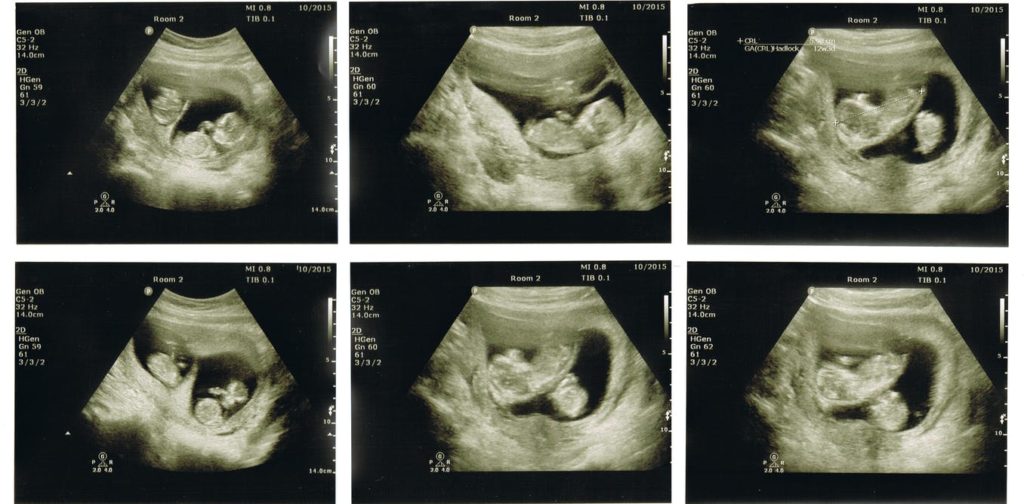Researcher Claims CRISPR-edited Twins Are Born – How Will Science Respond?
HEALTH, BRICS, ORGANIC, GMO, GENETIC ENGINEERING, SCIENCE, 10 Dec 2018
Dimitri Perrin and Gaetan Burgio – The Conversation

Chinese scientist He Jiankui of Shenzhen claims he helped make the world’s first genetically edited babies.
From www.shutterstock.com
27 Nov 2018 – Gene editing technology is revolutionising biology – and now twin human baby girls may be a living part of this story.
Today several media outlets report that a team of scientists in China has used CRISPR to modify the DNA of healthy human embryos to genetically “vaccinate” against HIV infection.
This is the first reported case of humans born with CRISPR-modifed DNA.
Read more: What is CRISPR gene editing, and how does it work?
The molecular scissors known as CRISPR (CRISPR/cas9 in full) allow scientists to modify DNA with high precision and greater ease than previous technologies. There are high hopes these molecular scissors may aid in curing diseases such as cancer or other conditions – but scientists around the world had agreed careful regulation was required before the technology was used in humans.
Now with this news, all eyes will be on the Second International Summit on Human Genome Editing taking place this week in Hong Kong. This meeting will hopefully lead to a renewed consensus for tighter control of CRISPR editing in human embryos.
How has the babies’ genome been modified?
According to several reports, researchers at the Southern University of Science and Technology in Shenzhen (China) have created the first gene-edited babies.
It’s important to note here the science has not been posted on a preprint server or published in a peer-reviewed journal – the usual standard applied to confirm new research is valid and ethically sound. However, Chinese medical documents posted online support the notion that a trial had been set up, and the lead scientist involved (He Jiankui) has made a video statement.
httpv://www.youtube.com/watch?v=th0vnOmFltc
Scientist He Jiankui of Shenzhen says he said he has altered DNA in human embryos, and that healthy twin girls are now at home with their parents.
In China the prevalence of HIV infection is high, and access to health care a serious public health concern. According to the medical document published online, the study recruited HIV-positive men with HIV-negative female partners, and who were willing to participate in an IVF program and allow embryos to be edited with CRISPR.
The team led by Jiankui He focused on removing a gene called CCR5, critical for the HIV virus to enter into the cells. The goal was to genetically “vaccinate” the babies against HIV infection. They modified the DNA of the embryos, verified the molecular scissors were truly on target and implanted edited embryos in the mother’s body.
Reports indicate that gene-edited twin girls have now been born. In one of the twins both copies of the CCR5 gene are said to be modified, and for the other one only one copy is modified.
We have little to no details on how this was performed and we must take these reports with a lot of caution.
Serious ethical concerns
CRISPR is easier to use and more precise than previous methods, but it is not a perfect technology. It can lead to unintended consequences, such as affecting other genes (“off-target” effects) or making multiple modifications of the gene we are aiming to modify (“on-target” effects). There is an ongoing discussion as to how widespread “off target” and “on-targets” modifications are, and what the unintended consequences of these effects may be.
Modifying embryos may have lasting consequences: not only would affected children have had their genome modified, but their future offspring could also carry these genetic modifications. To date we do not know what the long term effects of CRISPR-modification of human DNA are.
Read more: World’s first gene-edited babies? Premature, dangerous and irresponsible
Given the massive, multi-generational implications of editing embryos, we argue it should only be considered in cases where the modification would cure an existing disease and for which no other, lower-risk solution is available and when potential side effects are known.
Controversially, in the study being discussed, the edit does not cure a pre-existing disease, and we already have existing alternatives to prevent HIV infection and limit its clinical progression to AIDS.
The reports fall in the grey area between attempts to cure diseases, and the dreaded “designer baby” scenario, where humans could be modified for benefits unrelated to health (potentially expanding to include intelligence, aesthetics and more).
An important, broader discussion is taking place
As soon as CRIPSR technology was widely available, it was a matter of when, rather than if, it would be used on humans. The first modification of human embryos was reported by another Chinese team in May 2015. Those embryos were not viable, but it sparked an intense debate about the ethics of such modifications.
Read more: Human embryo CRISPR advances science but let’s focus on ethics, not world firsts
This led to the the Chinese Academy of Sciences (CAS), the Royal Society (RS), and the U.S. National Academy of Sciences (NAS) and U.S. National Academy of Medicine (NAM) coming together to organise an International Summit on Human Gene Editing in December 2015 in Washington, DC.
Editing human embryos was the topic discussed at that meeting. At the time, a published conclusion stated that:
it would be irresponsible to proceed with any clinical use of human embryos editing unless and until (i) the relevant safety and efficacy issues have been resolved, based on appropriate understanding and balancing of risks, potential benefits, and alternatives, and (ii) there is broad societal consensus about the appropriateness of the proposed application.
The committee also noted:
these criteria have not been met for any proposed clinical use: the safety issues have not yet been adequately explored; the cases of most compelling benefit are limited.
CRISPR pioneers Jennifer Doudna and Emmanuelle Charpentier rightly noted the need for a rational public discourse on the use of the technology. However, this rational debate can only take place if all scientists play their part and ensure that all experiments are done in the public interest.
In Australia human embryo editing for reproductive purpose is strictly prohibited.
A race for attention
Based on the information currently available, it is difficult not to consider this latest experiment as anything but an attempt to win a “race” and grab attention.
The Southern University of Science and Technology has now released a statement that it gave no permission to Jiankui He for his experiment, that he has been on leave since February, and that they believe the experiment violates academic ethics and academic norms.
Rice University has also opened an investigation into Michael Deem (a bioengineering professor at Rice and previous supervisor of He) and his possible role in the study.
Whether He’s claims are true or not, this whole situation is a disservice to the entire field of research, and to potential future recipients of CRISPR-based therapies.
_________________________________________
Dimitri Perrin – Senior Lecturer, Queensland University of Technology
Gaetan Burgio – Geneticist and Group Leader, The John Curtin School of Medical Research, Australian National University
Republish our articles for free, online or in print, under Creative Commons license.
Go to Original – theconversation.com
DISCLAIMER: The statements, views and opinions expressed in pieces republished here are solely those of the authors and do not necessarily represent those of TMS. In accordance with title 17 U.S.C. section 107, this material is distributed without profit to those who have expressed a prior interest in receiving the included information for research and educational purposes. TMS has no affiliation whatsoever with the originator of this article nor is TMS endorsed or sponsored by the originator. “GO TO ORIGINAL” links are provided as a convenience to our readers and allow for verification of authenticity. However, as originating pages are often updated by their originating host sites, the versions posted may not match the versions our readers view when clicking the “GO TO ORIGINAL” links. This site contains copyrighted material the use of which has not always been specifically authorized by the copyright owner. We are making such material available in our efforts to advance understanding of environmental, political, human rights, economic, democracy, scientific, and social justice issues, etc. We believe this constitutes a ‘fair use’ of any such copyrighted material as provided for in section 107 of the US Copyright Law. In accordance with Title 17 U.S.C. Section 107, the material on this site is distributed without profit to those who have expressed a prior interest in receiving the included information for research and educational purposes. For more information go to: http://www.law.cornell.edu/uscode/17/107.shtml. If you wish to use copyrighted material from this site for purposes of your own that go beyond ‘fair use’, you must obtain permission from the copyright owner.
Read more
Click here to go to the current weekly digest or pick another article:
HEALTH:
- U.S. Terminates Funding for Polio, H.I.V., Malaria and Nutrition Programs Around the World
- Autism, Made in the USA
- Big Pharma Is a Big Menace to Global Health
BRICS:
- The “BRICS Sovereigns” vs the “Globalist Oligarchy”
- Cuba Joining BRICS Is a Lifeboat for Its Economy
- BRICS and G20 Value Platforms: A Comparative Analysis
ORGANIC, GMO, GENETIC ENGINEERING:
- Veganic Farming: How My Tiny Plot Produced 5,000 Pounds of Food without Using Manure
- Nothing New in New GMOs
- Alert! New ‘Redesigned GMOs’ Being Forced on Farmers and Consumers
SCIENCE:

